Cricket
Sunil Joshi: “I’d choose Kuldeep over Chahal in India’s World Cup squad.”
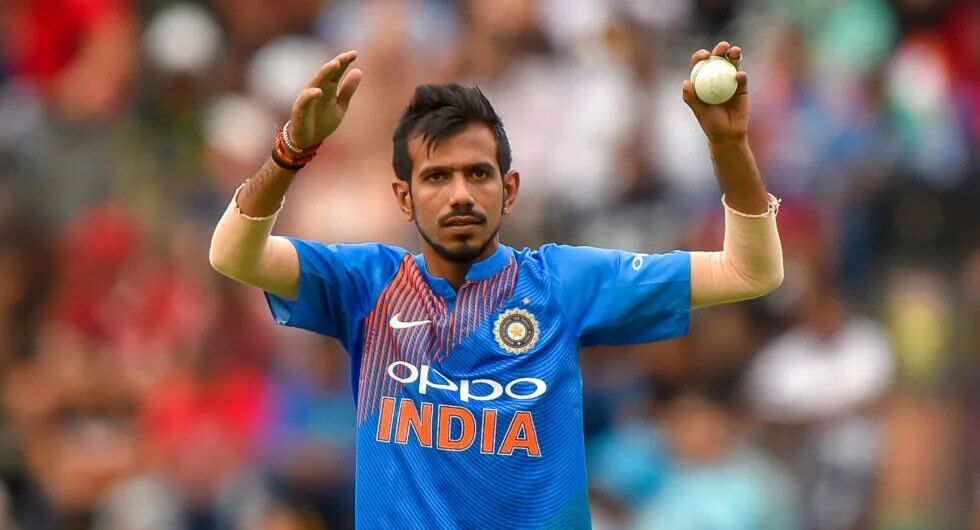
Kuldeep Yadav won the Player-of-the-Match award in December for his five-for in the series’ lone Test in Bangladesh. He followed it up with match-winning performances in ODI series against Sri Lanka and New Zealand at home, and he forced his way into India’s team for the first two Tests against Australia, which begin next week in Nagpur. While Kuldeep has rediscovered his mojo, his good friend and spin twin, Yuzvendra Chahal, appears to have lost it. Chahal, who became India’s leading wicket-taker in Twenty20Is on Sunday, has struggled with his bowling rhythm, technique, and confidence for some time now, forcing the team management to sideline him frequently.
Sunil Joshi, a former India left-arm spinner who served on the Indian selection panel between 2020 and 2022, has closely monitored both Kuldeep and Chahal’s performances. Joshi deconstructs their approaches, explains what makes them effective or ineffective, and selects his World Cup squad.
Kuldeep Yadav was recently named Player of the Match at Chattogram, Bangladesh. He also had strong performances in one-day internationals against Sri Lanka and New Zealand. What makes him so powerful?
Kuldeep has worked really hard on a couple of things. I’ve been watching him closely since my tenure as coach at Uttar Pradesh, when he played a few games after being dropped from the Indian team during the 2019-20 season.
During the [2020-21] England series, I observed Kuldeep closely during the Chennai Test matches: his body was considerably more open-chested, and his [right] hand was falling away from the point of target. Your non-bowling arm should follow the batsman, and your bowling hand should be as near to the batsman’s head as feasible. If you think of a clock, your bowling arm should come from just before 12 o’clock; if it comes from 1 o’clock, the trajectory will be flatter. If your non-bowling arm is straight, your bowling hand will naturally move closer to the head. Kuldeep has made another change.
He concentrated on his arm speed, which was slightly slower. The spring in his bowling run-up is now visible. He has made the run-up smoother and more consistent, and his arm speed is good. In the follow-through, his body is moving towards the batsman, and his line of attack has improved. More revolutions are on the ball.
A great illustration of [all of this coming together] is Dasun Shanaka’s wicket [in the ODIs in Kolkata and Thiruvananthapuram earlier this month] – the way he bowled him, that’s the line we’ve been discussing with Kuldeep and he understood what was necessary.
He also changes how he uses the crease. He was bowling near the centre of the crease earlier. He now bowls wider, from the centre, and close to the stumps. As a left-arm wristspinner, every time you bowl away from the crease, especially to a right-hander, it will be difficult if you don’t get the line perfect. You end up bowling middle-and-leg when you get close to the stumps. It’s an ideal angle for getting near to the stumps and taking the ball away from the left-hander. The greatest film for bowling a right-hander, in my opinion, is [to watch] the Dasun Shanaka wicket in Thiruvananthapuram, where Kuldeep got him through the gap between bat and pad.
Do you think he’s gotten smarter and more consistent?
You must give him credit. He has worked extremely hard and clearly understands what is required. He has also played in domestic matches. He appeared in one Test and three One-Day Internationals for India A against New Zealand A. He did well, getting wickets.
The greater discussion about Kuldeep’s improved consistency, as some previous players have noted, is his delivery speed.
I always think that bowling speeds between 70 and 85kph are ideal for spinners. The faster you bowl through the air, the easier it is for a batsman to line up. When the bowler slows down, adjusts his speed, or starts spinning, the batsman must use his intellect to determine the pitch of the ball, as well as his technique and timing.
Kuldeep has worked hard on his speed, which I believe is presently between 75kph and late 80s. He doesn’t bowl any faster than that. The more revolutions you put on the ball, the more it will skid through after pitching.
Former India head coach Ravi Shastri says Kuldeep’s efforts on hip flexion and lower-body strength has enabled him to transmit such revs. Do you concur?
That will only happen when he has focused on his delivery stride. That is why it is much easier to transfer your body weight towards the target when everything is side-on – when everything is side-on, you immediately transfer your body weight [properly] and your hip drive will improve significantly.
Rhythm is divided into three sections: run-up, delivery stride, and follow-through. If one of these is missed, the bowler will be in a difficult situation. When you run too fast, everything happens too fast, including the movement, and the trajectory is flatter. Everything will be slow if you go too slowly – there will be fewer revolutions on the ball and the batsman will have enough time to go back or forward. If you do not complete your follow-through, you will bowl short. Because Kuldeep is short, he cannot have a longer stride as a spinner because you collapse and are unable to transmit body weight towards the batsman and extract the proper pace from your hip drive. A spinner’s delivery stride should be shoulder width – this is an optimal length.
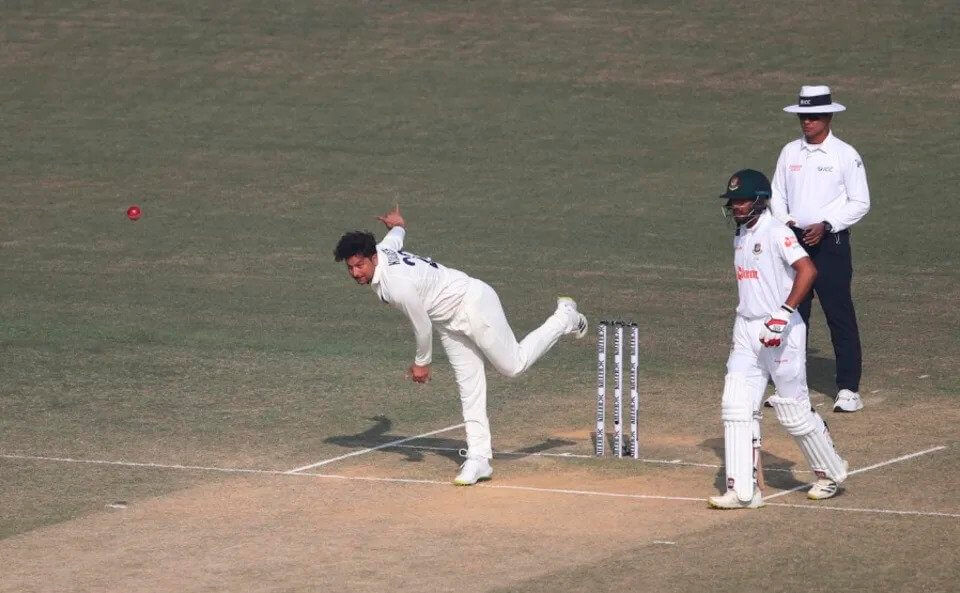
This is what we can see in Kuldeep now: the transfer of body weight, the hip drive, as Ravi said, and of course the arm speed, the front arm, and revolutions on the ball. Plus, he likes the small changes he has made to his bowling arsenal, which are helping him win.
What is the one thing you want him to keep getting better at?
He can probably sometimes bowl around the stumps to left-handed batters, who can’t see that area. If Kuldeep comes around the wickets, the batsman might think he’s going to take the ball away, but he doesn’t. If you saw how he got Henry Nicholls out yesterday [in the ODI in Hyderabad against New Zealand], that was a classic delivery. Daryl Mitchell was also lbw. And Dasun Shanaka’s forward defence was fully stretched, through the gate, and he was bowled.
He is doing this by always going the same length. He is probably in a spot right now where he can take wickets at any time and put pressure on the team. In white-ball cricket, you have to put pressure on the batsman and try to get inside his head. For example, Mitchell Santner bowled Virat Kohli in Hyderabad, but Kohli could have played forward.
Because R Ashwin, Ravindra Jadeja, and Axar Patel are all very good at Test cricket, Kuldeep is fourth in line. But he’s shown that he can make a difference every time he’s called up. He will play in the first two Tests at home in February against Australia. Think he will be important in the Border-Gavaskar Trophy?
I believe so. One, because he has been good at taking wickets lately. As a former cricket player, I pay more attention to how he gets wickets: a spinner getting the batter out through the gate bowled, caught at slip, stumped getting to the pitch of the ball, miscuing the ball, and getting caught at mid-off or mid-on. These are the places where a spinner would love to get a dismissal.
When you look at the Australian Test team and the places where they play, where do you think Kuldeep will have an advantage?
If Ashwin is our first choice and Jadeja isn’t available, then Kuldeep and Axar should be our next choices. If they are playing three spinners and Jaddu is available, Kuldeep should play. Don’t worry about the venues or how well our spinners will do there. Take a look at how Kuldeep has taken wickets. In the recent series he has played, whether it was red ball or white ball, most of his dismissals happened within the 30-yard circle. That’s great for a bowler because it shows that your line and length have been very consistent. Kuldeep will be very important for India to beat Australia.
Let’s talk about Yuzvendra Chahal. Is he getting easier to guess?
Any bowler will go through that phase at some point. Chahal is likely in that stage. If Chahal can’t get any playing time in the middle, he should probably ask the team management to let him go play domestic cricket. He needs to play a lot of games to get back into shape. That should be the best way for Chahal to get ready.
Is there something he can work on with his technique?
He should really work on finishing his follow-through, because sometimes he just pushes the ball without giving it any spin. When you slow your arm, the ball automatically spins less, making it much easier for a batsman to catch. Any spinner will become predictable because the batsman will know, “Okay, he’s only doing this [releasing the ball without spin] or he’ll probably go outside the off stump, so if I leave that ball, he’ll come back into the stumps [line],” which is the batsman’s strength.
Chahal needs to work on his follow-through, hitting the right length, which is the line between the fourth and fifth stumps, speeding up his arm, and spinning the ball. Spinning the ball is the most important thing. I have seen him get hit a lot in the last few series because he pushed the ball. The seam turns were flatter, and there was no overspin. Any fingerspinner requires the wrist to move over the top of the seam. If the wrist moves to the side, the spinner will undercut the ball.
Chahal is a spin bowler who attacks. He lost his magic in some way…
He was a spinner who tried to attack. Was.
Everyone gets a little bit of a break. Okay, theek hai, I’ve done well, let me take it easy for a while. As soon as you realise that, the pressure starts to build up on you.
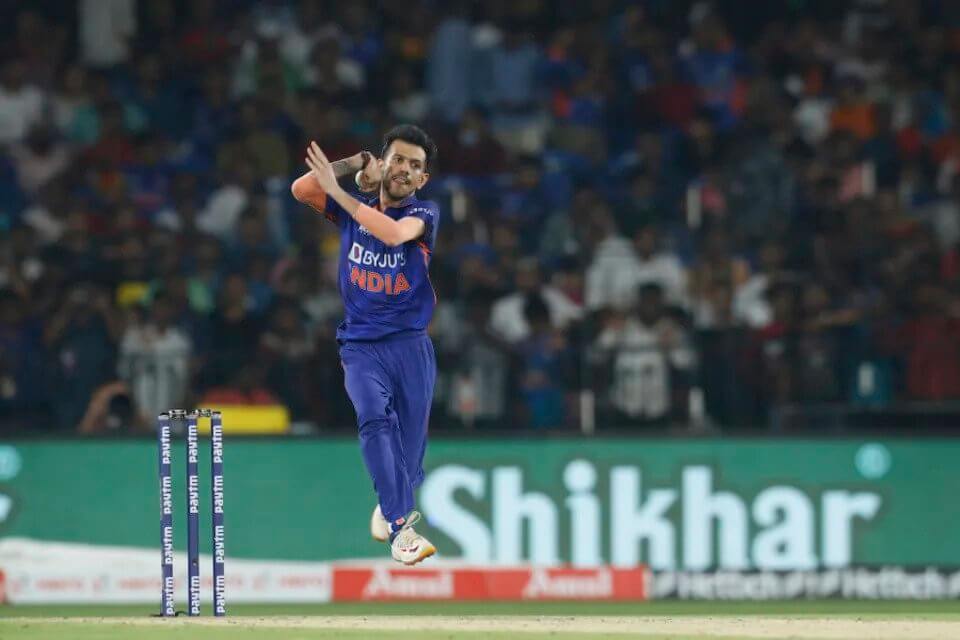
When Chahal bowls the fourth-stump line, batters start to hit him.
Every ball should be on the line between the fourth and fifth stumps. He throws most of his googlies from the middle stump. From the middle stump, you can’t bowl a googly. Where did Anil Kumble hit his sixes and fours? Fifth post. That’s where you pull a batsman to get him or her through the bat-pad gap. You’ve seen how many times a legspinner has gotten Virat Kohli out in the last few IPLs. Did he get out from a middle-stump line to a googly? No. Fifth stumbling block.
I use the three-T method: technique, tactics, and personality. You know how to play, and you play for your country. But you also need to pay attention to how they act and what they do. That’s how you get rid of a batsman.
Does Chahal need to improve how fast he bowls?
He gets the ball inside more than he does with speed. That’s not allowed. As a real spinner, Kuldeep has been rewarded for getting on the seam.
Would you choose Kuldeep and Chahal to be on your team for the World Cup, which will be held in India later this year?
We’re talking about seven to eight months away. Kuldeep is in a state of complete relaxation. He should be more consistent. He must consider the tactical aspect. He must decide how he will approach each team and venue. The World Cup is being held in India, but each venue has a unique dimension in terms of pitch, soil, and climate. He needs to prepare accordingly.
Will you put Kuldeep in your team of 11 for the World Cup?
Without a doubt.
Cricket
1000 Runs in ODIs: Kohli’s Cricket Legacy
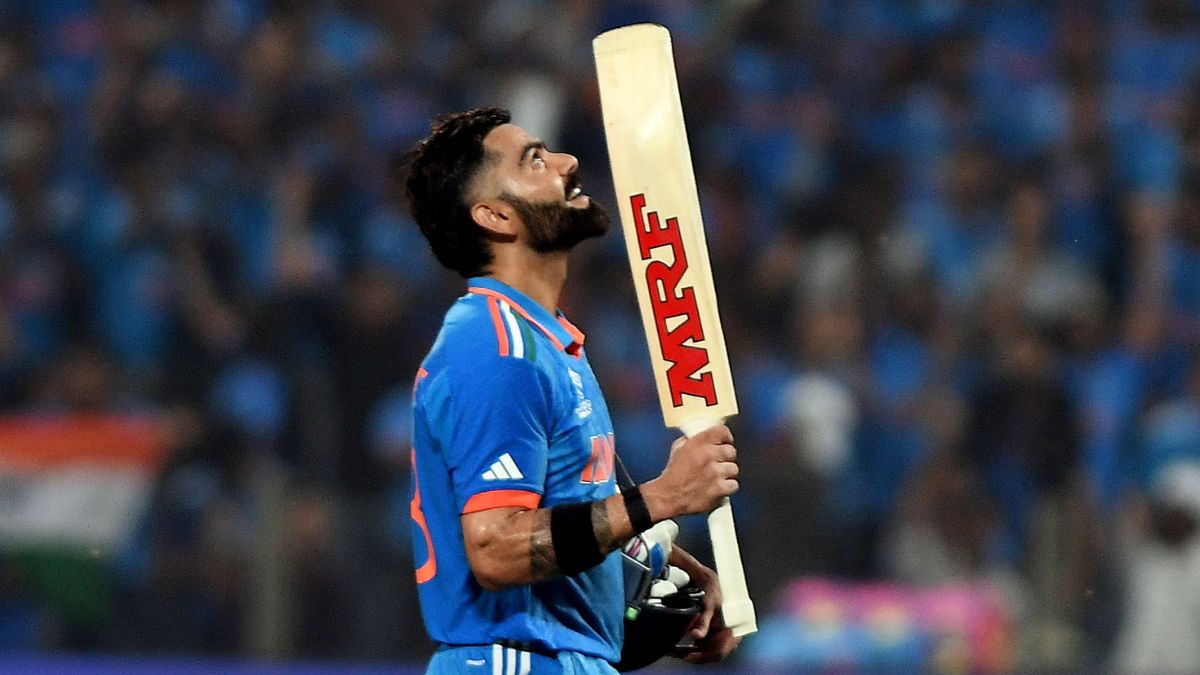
On Thursday, November 2, Virat Kohli achieved an accomplishment. He became the batsman to surpass 1000 runs in ODIs in 2023, following in the footsteps of Shubman Gill and Rohit Sharma. Not that,. He also joined Rohit Sharma, Shubman Gill, and Pathum Nissanka as the fourth players to achieve this impressive record in the 50-over format within the same year.
Stepping into History with 1000 Runs in ODIs
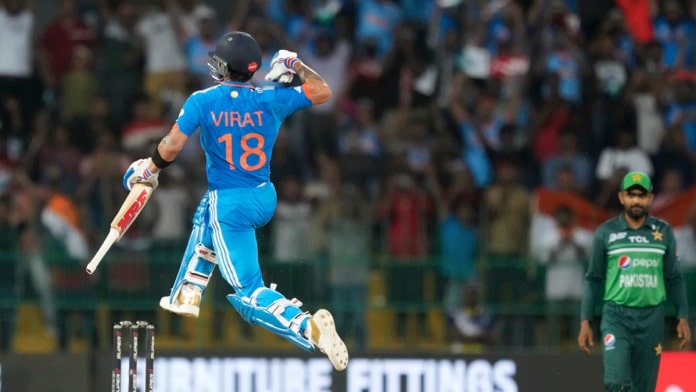
Entering the realm of history, Kohli’s unwavering determination and exceptional skills were put on display during his match in 2023. Notably, the cricket maestro, now 34 years old, made an indelible impact by surpassing Sachin Tendulkar‘s record, securing the most number of years with 1000 runs in ODIs. Kohli’s consistent ability to perform at such an exceptional level has been a defining characteristic of his illustrious career, as he had previously achieved this monumental milestone in 2011, 2012, 2013, 2014, 2017, 2018, and 2019, before accomplishing it once again in the present year of 2023.
Sachin Tendulkar with god of cricket Virat Kohli pic.twitter.com/zmztejNBBB
— Kevin (@imkevin149) November 2, 2023
An Unforgettable Journey
In an intense World Cup 2023 clash against Sri Lanka at the renowned Wankhede Stadium in Mumbai, Virat Kohli’s pursuit of this historic milestone was realized with an impressive 34 runs. Despite facing challenges, including a rare duck against England at the Ekana Stadium in Lucknow, his overall performance throughout the year has been nothing short of spectacular.
Kohli’s memorable journey was highlighted by an unbeaten century during India’s triumphant seven-wicket victory against Bangladesh at the Maharashtra Cricket Association (MCA) Stadium in Pune. Adding to his illustrious record, he solidified his stature with a brilliant 95 runs, making a significant contribution to India’s thrilling four-wicket win over New Zealand led by Tom Latham at the Himachal Pradesh Cricket Association (HPCA) Stadium in Pune.
Cricket
Shaheen Shah Afridi: Fastest to 100 ODI Wickets

Shaheen Shah Afridi, on Tuesday, October 31, achieved a remarkable feat, becoming the third fastest bowler to secure 100 wickets in ODIs. His outstanding performance during Pakistan’s World Cup 2023 match against Bangladesh at the renowned Eden Gardens in Kolkata led to this historic accomplishment.
A Landmark Moment
In the thrilling encounter, Shaheen clinched his 100th wicket in only his 51st match, dismissing Tigers’ opening batter Tanzid Hasan Tamim. The left-arm fast bowler displayed exceptional skill as he struck Tamim on the pads, prompting the on-field umpire to raise his finger. Despite Tamim’s referral to the third umpire using the Decision Review System (DRS), the replays confirmed the ball crashing into the stumps, upholding the on-field decision. Bangladesh lost their first wicket with the scoreboard reading 0 in just 0.5 overs.
Shaheen Afridi soars high yet again with another feat to his name 🦅#CWC23 | #PAKvBAN pic.twitter.com/IlQQ6P5xYK
— ICC Cricket World Cup (@cricketworldcup) October 31, 2023
Surpassing Preceding Records
Shaheen Shah Afridi not only secured this feat in record time but also outshone the accomplishments of esteemed bowlers preceding him. He surpassed the record of the fastest pacer, previously held by Mitchell Starc, who attained the milestone in August 2016 during an ODI against Sri Lanka at the R. Premadasa Stadium in Colombo.

Legacy of Excellence
Moreover, Shaheen shattered the long-standing record held by Saqlain Mushtaq, becoming the fastest Pakistani bowler to claim 100 wickets in ODIs. Saqlain had set this record on May 12, 1997, during an ODI against Sri Lanka in Gwalior. It is notable that among the Pakistani fast bowlers, the accomplished Shaheen Shah Afridi follows in the footsteps of the legendary Waqar Younis, who achieved the 100-wicket mark back in February 1993 against Zimbabwe in Sharjah.

Beyond ODIs
Demonstrating his prowess beyond ODIs, Shaheen has made significant contributions in Tests and T20Is as well. Since his debut in 2018, he has garnered 105 wickets in Tests and 64 wickets in T20Is. His exceptional journey began with a strong performance in the U19 World Cup in New Zealand. Notably, he played a pivotal role in Lahore Qalandars’ consecutive victories in the Pakistan Super League (PSL).
A Testament to Talent and Dedication
Shaheen Shah Afridi’s rapid rise to 100 ODI wickets within 51 matches underlines his exceptional talent and unwavering dedication to the sport. As he continues to leave an indelible mark on the cricketing world, his journey serves as an inspiration for aspiring cricketers worldwide. With his remarkable achievements, Afridi has solidified his place in the annals of cricket history, etching his name as one of Pakistan’s most formidable and promising fast bowlers.
Cricket
ICC World Cup: Shoaib Akhtar says, ‘Mai India ki tareef kyu na karu’

Former Pakistan fast bowler Shoaib Akhtar has recently expressed admiration for India’s dominant performance in the ongoing 2023 ICC World Cup. With India securing victories in all six matches, Akhtar highlighted the team’s exceptional display across various aspects of the game. Although the recent batting performance against England in Lucknow was relatively modest, India’s fierce bowling attack, led by Mohammed Shami and Jasprit Bumrah, proved instrumental in securing a remarkable win. This triumph not only solidified India’s leading position on the points table but also exacerbated England’s struggles in the tournament, leaving them virtually eliminated.
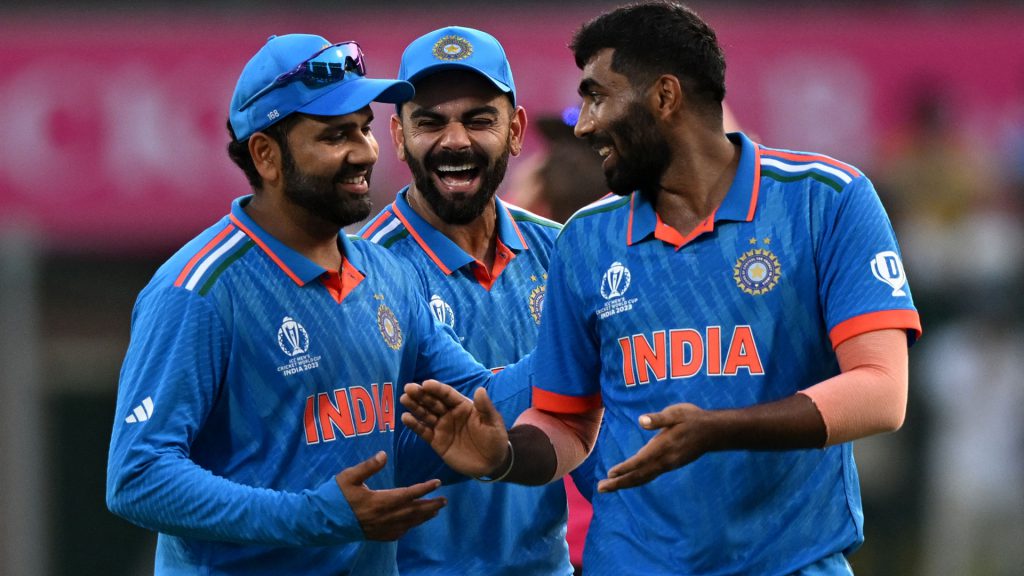
India’s Remarkable Bowling Transformation
In his analysis, Akhtar emphasized the transformative impact of Shami’s inclusion in India’s playing eleven following Hardik Pandya’s injury. Acknowledging Shami’s outstanding performances against New Zealand and England, Akhtar credited India’s ability to win matches through their bowling prowess, showcasing a shift from their traditional reliance on batting strength. He commended the collective effort of the Indian bowling unit, particularly recognizing the strategic brilliance of fast bowler Bumrah.
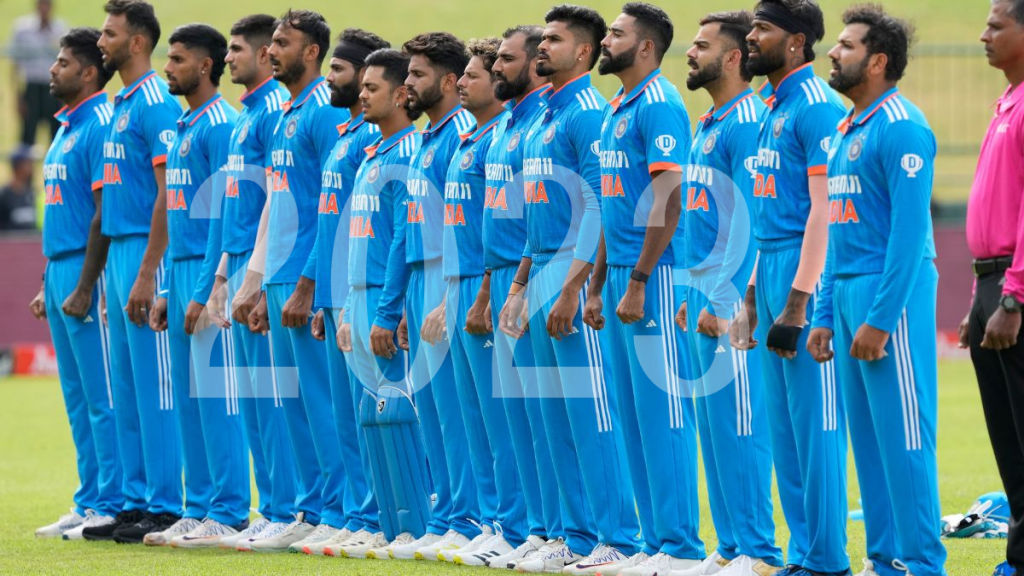
India’s Path to World Cup Glory
Looking ahead, Akhtar voiced his confidence in India’s potential to secure their third ODI World Cup trophy, highlighting the team’s upcoming matches against Sri Lanka, South Africa, and the Netherlands. Expressing optimism, he emphasized the significance of maintaining their unbeaten streak en route to the final, setting the stage for a potential historic ICC World Cup victory. However, Akhtar cautioned against compromising the successful bowling unit once Pandya returns to full fitness, warning against the potential detriment of a partially fit Pandya’s inclusion at the expense of a bowler.
Akhtar’s Praise for India and its Response to Criticism
Addressing skepticism surrounding his praise for the Indian team, Akhtar reiterated the exceptional nature of India’s performance, particularly in their ability to defend a modest total with a significant margin of victory. Undeterred by criticism, Akhtar reaffirmed his admiration for India’s exceptional cricketing prowess, urging acknowledgment and appreciation of their commendable achievements.
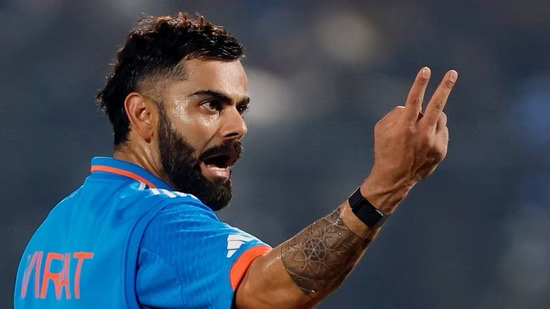
Shoaib Akhtar’s Perspective on Virat Kohli
Shifting focus, Akhtar’s history of praise extends beyond team performances to individual players, notably including former Indian team captain Virat Kohli. Reminiscing on Kohli’s resilience during a challenging phase in his career, Akhtar highlighted the pivotal role played by Kohli’s consistent century-scoring performances, leading to India’s victories. Recognizing Kohli’s contribution to the team’s success, Akhtar emphasized the significance of Kohli’s monumental centuries during crucial chases, solidifying his status as a crucial asset for the Indian cricket team.
In a comparison between Kohli and the legendary Sachin Tendulkar, Akhtar acknowledged Tendulkar’s status as one of the greatest batsmen while highlighting the challenges Tendulkar faced as a captain. Drawing parallels, Akhtar expressed confidence in Kohli’s eventual resurgence, expecting him to return to his prolific scoring form once he finds his equilibrium.
In summary, Akhtar’s acknowledgment of India’s exceptional performance and his recognition of individual players’ contributions underscore the team’s formidable presence in the 2023 ICC World Cup, setting the stage for a potential historic triumph in the coming days.







You must be logged in to post a comment Login